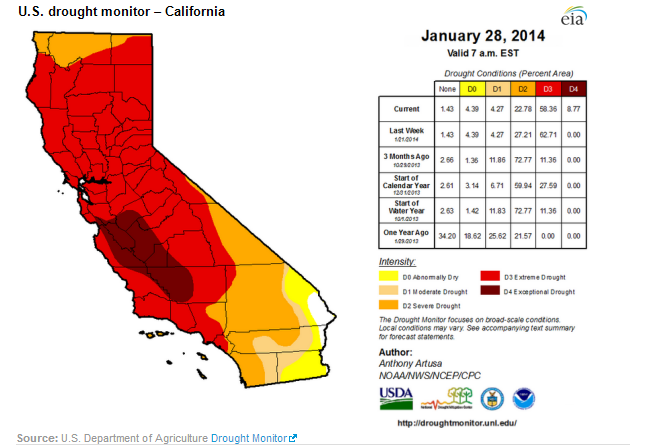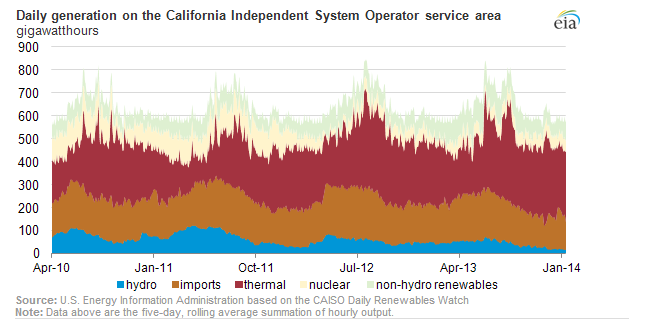Climate Change The Culprit? Extreme Drought Threatens California And Nevada's Hydro Power Capacity

Extreme drought in California and Nevada has reduced forecasts for the water supply in those states to less than half of their average seasonal norms, the U.S. Energy Information Administration (EIA) said.
California Governor Jerry Brown declared a state of emergency on Jan. 17 after the driest December on record left nearly 60 percent of the state with an “extreme drought” designation, the second-worst category in the U.S. drought monitor index. The drought conditions in California began in late 2011.

In the northern Sierra Nevada range, snowpack, a measure of how much water will melt into reservoirs and power hydroelectric generators throughout the year, has diminished to 20 percent of its normal amount for the period October 2013 to September 2014, according to the EIA.
About 14 percent of the country’s hydroelectric generating capacity is in California. Since 1989, hydroelectric dams have contributed 11 percent to 28 percent of the total amount of electricity generated in California.
Hydro output in the California Independent System Operator (CAISO), the electric grid operator for most of the state since 2010, has fallen since the summer of 2011. CAISO has increased its use of power from thermal sources, and it's importing power from hydroelectric dams in the Pacific Northwest, which is also suffering from a low water supply.

© Copyright IBTimes 2025. All rights reserved.






















